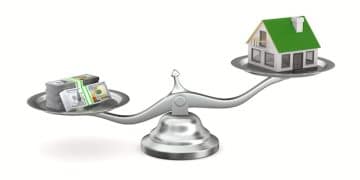Personal Finance Tips: Negotiate Lower Credit Card Rates in 2025

In 2025, negotiating lower interest rates on your credit cards can significantly reduce your debt burden and improve your financial health by using strategies such as improving your credit score, researching competitive rates, and directly contacting your credit card issuer.
Are you looking for effective ways to manage your credit card debt in 2025? Negotiating lower interest rates on your credit cards can be a game-changer. This article offers **personal finance tips for negotiating lower interest rates on your credit cards in 2025**, providing you with the knowledge and strategies to take control of your financial future.
Understand Your Credit Score and Report
Before you even think about negotiating, it’s crucial to have a solid grasp of your credit score and what’s in your credit report. These are the first things creditors will consider.
Knowing where you stand allows you to identify any discrepancies and prepare a strong case for a lower interest rate.
Check Your Credit Score
Your credit score is a numerical representation of your creditworthiness. Aim for a score of 700 or higher for the best negotiation leverage.
Review Your Credit Report
Obtain a copy of your credit report from all three major credit bureaus: Equifax, Experian, and TransUnion. Check for errors and dispute any inaccuracies immediately.
- Identify Errors: Look for incorrect account information or payment history issues.
- Understand Your Credit Utilization Ratio: This is the amount of credit you’re using versus your total available credit. Keep it below 30%.
- Note Payment History: Consistent on-time payments are key to a good credit score.
By understanding the intricacies of your credit score and report, you position yourself as a responsible borrower. This can greatly influence your credit card company’s decision to lower your interest rate. Remember, knowledge is power when it comes to your personal finances.
Research Competitive Interest Rates
Equipping yourself with information about what other credit card companies are offering is a powerful negotiation tool when seeking lower interest rates.
Knowing the landscape of available rates can give you the leverage you need to get a better deal from your current provider.

Compare Offers from Other Card Issuers
Start by researching the average interest rates for credit cards similar to yours. Websites like Bankrate and Credit Karma can provide valuable insights.
- Look for Balance Transfer Options: These cards often come with low introductory APRs.
- Consider Credit Union Rates: Credit unions tend to offer more competitive rates than traditional banks.
- Check for Limited-Time Offers: Keep an eye out for promotional periods with especially low APRs.
Leverage Online Comparison Tools
Utilize online tools that allow you to compare credit card offers side-by-side. These tools make it easy to see which cards have the best rates and terms.
Researching competitive interest rates not only helps you find potential alternatives but also empowers you to negotiate with your current credit card company. By showing that you’ve done your homework and are aware of other options, you demonstrate that you’re serious about reducing your costs.
Contact Your Credit Card Issuer
Sometimes, the most straightforward approach is the most effective. Contacting your credit card issuer to directly negotiate a lower interest rate can yield surprising results.
Preparation and professionalism are key to a successful negotiation.
Prepare Your Pitch
Before you call, gather all the information you need to make a strong case. This includes your credit score, history with the company, and any offers you’ve received from other card issuers.
Be Polite and Professional
Remember, the person you’re speaking with is more likely to help if you’re respectful and courteous. Start by introducing yourself and explaining the reason for your call.
- Highlight Your Loyalty: Mention how long you’ve been a customer and your history of on-time payments.
- Explain Your Situation: If you’ve recently improved your credit score or have received better offers elsewhere, mention it.
- Ask Directly for a Lower Rate: Be clear about what you want. A specific request is more likely to be granted.
Directly contacting your credit card issuer is a personal way to address your concerns and seek a solution. By being prepared, polite, and persistent, you increase your chances of securing a lower interest rate. It’s also a demonstration of your commitment to managing your finances responsibly.
Transfer Your Balance to a Lower-Rate Card
If direct negotiation doesn’t work, another viable option is to transfer your existing balance to a credit card with a lower interest rate.
This strategy can save you a significant amount of money in interest payments over time.
Look for 0% APR Balance Transfer Offers
Many credit cards offer introductory periods with 0% APR on balance transfers. This can give you a window to pay down your balance without accruing interest.
Calculate Potential Savings
Before transferring your balance, calculate how much you’ll save in interest. Factor in any balance transfer fees, which typically range from 3% to 5% of the transferred amount.

Transferring your balance to a lower-rate card is a strategic move that can provide immediate relief from high interest charges. However, it’s important to consider all associated fees and ensure you have a plan to pay off the balance before the promotional period ends. This can create a substantial savings opportunity.
Improve Your Credit Utilization Ratio
Your credit utilization ratio, which is the amount of credit you’re using compared to your total available credit, significantly impacts your credit score.
Lowering this ratio can improve your creditworthiness and increase your chances of negotiating lower interest rates.
Pay Down Your Balances
The most effective way to lower your credit utilization ratio is to pay down your credit card balances. Aim to keep your utilization below 30% of your total available credit.
- Make Multiple Payments: Instead of making one large payment each month, try making smaller payments throughout the month.
- Increase Your Credit Limit: Requesting a credit limit increase can also lower your utilization ratio, but be mindful of your spending habits.
- Avoid Maxing Out Cards: Maxing out your credit cards can negatively impact your credit score and make it harder to negotiate lower rates.
Improving your credit utilization ratio is a proactive step toward better financial health and is viewed positively by credit card companies. A lower utilization ratio not only boosts your credit score but also demonstrates that you’re managing your credit wisely, making you a more attractive candidate for lower interest rates.
Set Up Automatic Payments
Demonstrating responsible financial behavior is essential when negotiating with credit card companies. Setting up automatic payments is an easy way to ensure you never miss a payment.
This can significantly improve your credibility and increase your chances of securing a lower interest rate.
Ensure Timely Payments
Automatic payments ensure that your credit card bills are paid on time, every time. This consistent payment history can improve your credit score and demonstrate responsible financial behavior.
Avoid Late Fees
Missing payments can result in late fees and negatively impact your credit score. Automatic payments eliminate this risk.
Setting up automatic payments signals to credit card companies that you are a reliable customer. It showcases your commitment to managing your credit responsibly and decreases the perceived risk of lending to you, making them more willing to consider lowering your interest rate.
Monitor Your Credit Report Regularly
Monitoring your credit report regularly is essential for identifying errors, spotting signs of identity theft, and staying informed about your creditworthiness.
Being proactive about your credit health positions you favorably when negotiating for lower interest rates.
Identify and Dispute Errors
Regularly reviewing your credit report allows you to quickly identify and dispute any inaccuracies that could be negatively impacting your credit score.
Spot Identity Theft Early
Monitoring your credit report can help you detect signs of identity theft, such as unauthorized accounts or inquiries.
Regularly monitoring your credit demonstrates attentiveness to your financial health and preparedness to address any issues promptly. This proactive approach builds trust with credit card companies, increasing the likelihood that they’ll consider your request for a lower interest rate.
| Key Point | Brief Description |
|---|---|
| 🔍 Credit Score | Understand and improve your credit score for better negotiation leverage. |
| 💰 Balance Transfer | Consider transferring your balance to a lower-rate card to save on interest. |
| 📞 Direct Negotiation | Contact your issuer directly to negotiate a lower interest rate. |
| 📊 Utilization Ratio | Keep your credit utilization below 30% to improve your creditworthiness. |
Frequently Asked Questions
▼
Generally, a credit score of 700 or higher increases your chances of successfully negotiating lower interest rates on your credit cards. A higher score indicates lower risk.
▼
You can try negotiating every six months, particularly if your credit score has improved or if you’ve received offers from other credit card companies.
▼
If your credit card company refuses to lower the rate, consider transferring your balance to a card with a lower APR or exploring options with other financial institutions.
▼
There are minimal risks, but be aware that some companies might offer a lower rate in exchange for reduced benefits or rewards. Review the terms carefully before accepting.
▼
Yes, setting up automatic payments demonstrates responsible financial behavior, which can improve your negotiation position and potentially lead to a more favorable interest rate.
Conclusion
Negotiating lower interest rates on your credit cards in 2025 requires a proactive approach and a solid understanding of your financial standing. By improving your credit score, researching competitive rates, and communicating effectively with your credit card issuer, you can take control of your financial health and save money on interest payments.





